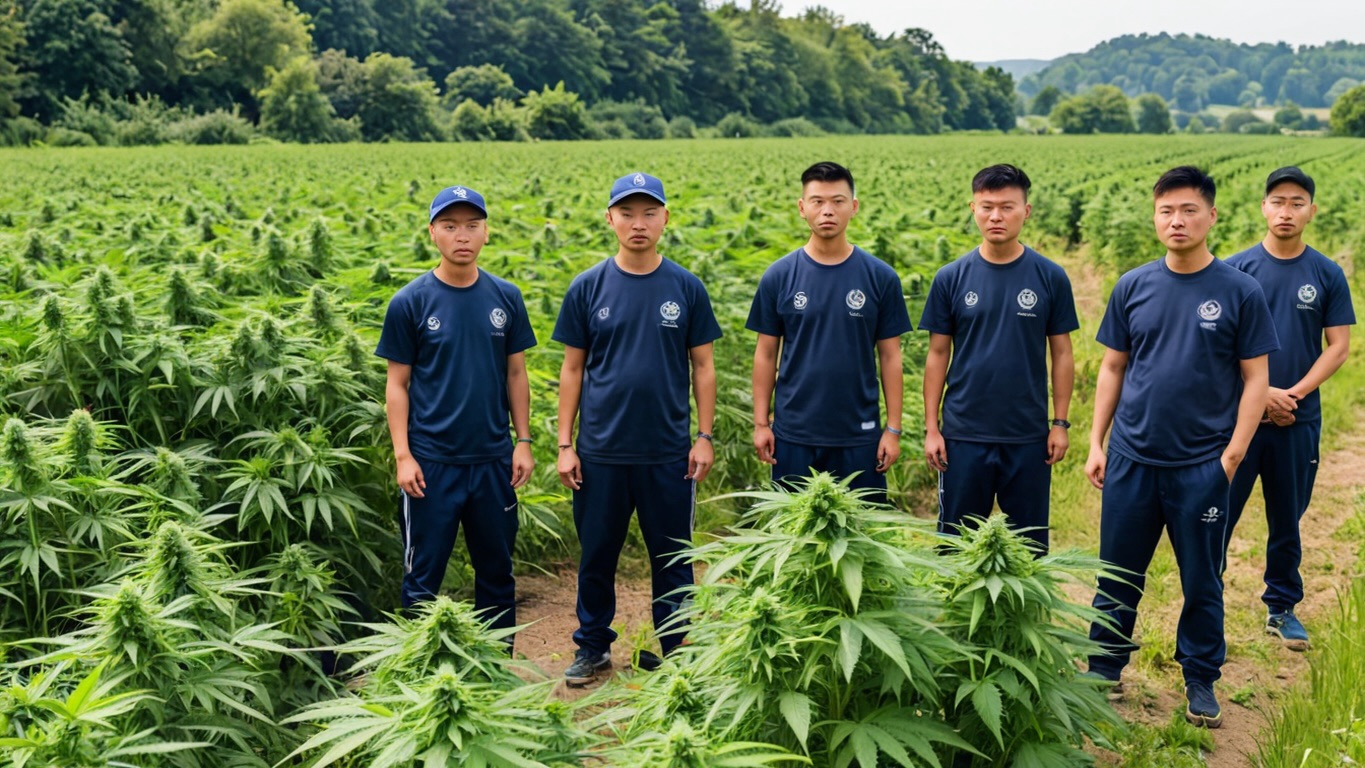The Convergence of Mexican and Chinese Cartels: A Dangerous Collaboration
As we delve deeper into the unexpected consequences of cannabis legalization in the United States, another alarming trend comes to light: the increasing collaboration between Mexican and Chinese cartels. These criminal organizations are not only finding common ground in the cannabis industry but are also leveraging their respective strengths to dominate the drug trade, with devastating consequences for communities across the U.S. This alliance has contributed to the spread of both illegal cannabis operations and the deadly fentanyl crisis, further complicating the landscape for law enforcement and public health officials.
A Partnership Forged in Illegality
Mexican and Chinese cartels have historically been involved in different aspects of the global drug trade, but their recent collaboration has taken on new dimensions, especially with the expansion of the legal cannabis market in the U.S. This partnership exploits the complementary strengths of each group: Chinese cartels provide chemical expertise and access to precursor chemicals for drug production, while Mexican cartels have established networks for drug distribution throughout North America.
For instance, the Sinaloa and Jalisco New Generation cartels, two of the most powerful drug trafficking organizations in Mexico, have been documented working closely with Chinese criminal networks to import precursor chemicals necessary for fentanyl production. These chemicals are often shipped from China to Mexico, where they are processed into fentanyl in clandestine labs run by the cartels. The finished product is then smuggled into the United States, where it is often mixed with other drugs, dramatically increasing the risk of overdose deaths.
According to a 2020 report from the U.S.-China Economic and Security Review Commission, Chinese suppliers are the primary source of the precursor chemicals used to manufacture fentanyl and other synthetic opioids in Mexico. This connection has been facilitated by the same shipping routes and networks used to smuggle other illicit goods, including the equipment needed for illegal cannabis cultivation .
The Intersection of Cannabis and Fentanyl
The collaboration between Mexican and Chinese cartels does not end with fentanyl; it also extends into the cannabis market, blurring the lines between legal and illegal operations. In states where cannabis is legalized, Chinese cartels have increasingly taken over cannabis farms, often using illicit labor and water sources to maximize profits. These farms are frequently hidden in plain sight, operating under the guise of legitimacy but often connected to larger criminal enterprises.
Investigations have revealed that these Chinese-run cannabis farms in states like California, Oregon, and Colorado are often part of a broader network linked to Chinese organized crime. These organizations have not only the resources to invest in large-scale cannabis operations but also the logistical capabilities to distribute their product illegally across state lines, undermining the legal market and funneling profits back into their criminal enterprises .
At the same time, the Mexican cartels are utilizing these cannabis operations as a cover for their fentanyl trafficking. By embedding their drug distribution within the seemingly legal cannabis supply chains, these cartels can exploit the gaps in regulation and enforcement, making it harder for authorities to trace their activities. This strategy allows them to maintain a foothold in both the cannabis and opioid markets, effectively doubling their criminal enterprise’s reach and impact.
The Deadly Spread of Fentanyl
The consequences of this partnership are dire. Fentanyl, a synthetic opioid that is 50 to 100 times more potent than morphine, has become a leading cause of overdose deaths in the United States. According to the Centers for Disease Control and Prevention (CDC), more than 70,000 people died from synthetic opioid overdoses in 2021 alone . Much of this fentanyl is traced back to Mexican drug labs supplied by Chinese precursor chemicals, showing a direct link between the collaboration of these cartels and the ongoing opioid crisis.
Moreover, the spread of fentanyl has reached into communities that were previously untouched by the drug epidemic, often disguised as other drugs like heroin, cocaine, or even counterfeit prescription pills. The presence of fentanyl in these substances has made the drug landscape more dangerous than ever before, turning every illicit purchase into a potential death sentence.
The Nexus of Cannabis and the Opioid Crisis
What began as an effort to create a safer, regulated cannabis market has inadvertently given rise to a dangerous new nexus between the cannabis and opioid crises. The involvement of Mexican and Chinese cartels in both markets demonstrates the fluidity with which these organizations adapt and evolve, constantly seeking new opportunities to expand their influence and maximize their profits.
By exploiting legal loopholes, corrupt officials, and the complexities of the modern drug trade, these cartels have managed to intertwine the production and distribution of cannabis with the trafficking of lethal synthetic opioids. This dual strategy not only maximizes their profit margins but also ensures a steady supply of illicit drugs flowing into the United States, fueling addiction and death across the country.
A Call to Action: Combating the Cartel Nexus
Addressing this multifaceted threat requires a comprehensive approach that goes beyond traditional law enforcement tactics. It calls for robust international cooperation to curb the flow of precursor chemicals, increased funding for local law enforcement agencies, and enhanced community vigilance to identify and report suspicious activities. Additionally, there is a pressing need for more stringent regulations and oversight within the legal cannabis market to prevent criminal organizations from exploiting these businesses as fronts for their operations.
Ultimately, the convergence of Mexican and Chinese cartels in the cannabis and opioid markets represents a significant challenge to both public safety and the integrity of the legal cannabis industry. By recognizing this threat and taking proactive steps to address it, we can work to protect our communities and ensure that the promise of cannabis legalization is not overshadowed by the unintended consequences of cartel involvement.
